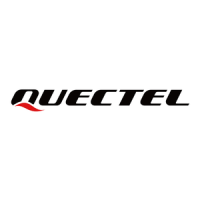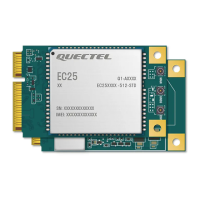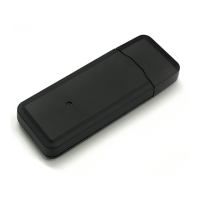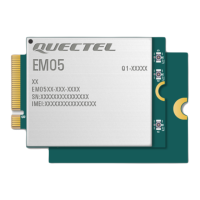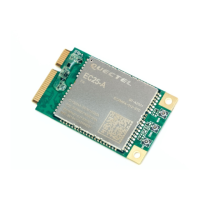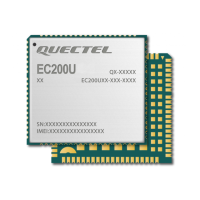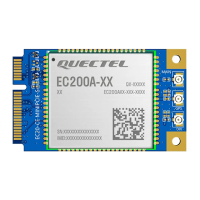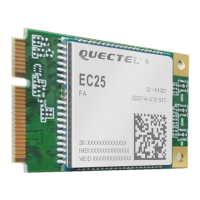LTE Standard Module Series
EC21_Series_Hardware_Design
83
/ 118
4.4. Antenna Design Requirements
The following table shows the requirements on main antenna, Rx-diversity antenna and GNSS antenna.
Table 41: Antenna Requirements
Type Requirements
GNSS
9
Frequency range: 1559–1609 MHz
Polarization: RHCP or linear
VSWR: < 2 (Typ.)
Passive antenna gain: > 0 dBi
Active antenna noise figure: < 1.5 dB
Active antenna gain: > 0 dBi
Active antenna embedded LNA gain: < 17 dB
GSM/WCDMA/LTE
VSWR: ≤ 2
Efficiency: > 30 %
Max input power: 50 W
Input impedance: 50 Ω
Cable insertion loss:
< 1 dB: LB (<1 GHz)
< 1.5 dB: MB (1–2.3 GHz)
< 2 dB: HB (> 2.3 GHz)
When the module supports LTE B13 or B14, it is recommended to use passive GNSS antennas, since
active antennas may cause harmonics that affect GNSS performance.
4.5. RF Connector Recommendation
If RF connector is used for antenna connection, it is recommended to use U.FL-R-SMT connector
provided by Hirose.
9
It is recommended to use a passive GNSS antenna when LTE B13 or B14 is supported, as the use of active antenna
may generate harmonics which will affect the GNSS performance.
NOTE
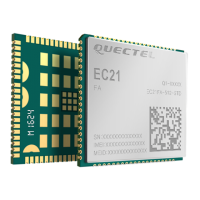
